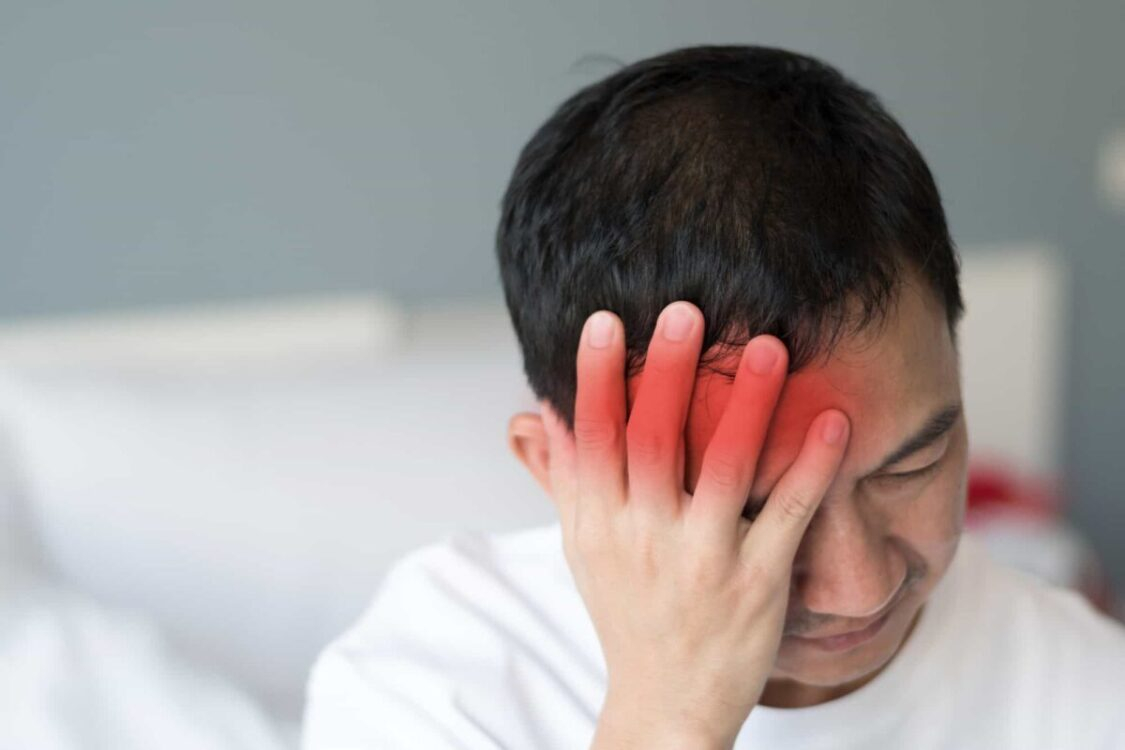A stinging headache or stabbing head can occur on both the right and left. What causes primary or idiopathic stabbing headaches and what exactly is it? Primary stabbing headaches refer to a form of headache in which you suffer from one or more short-term stabbing pains or shooting pains in your head. Often the pain is localized in the forehead, around or above the eye, or at the temples.
The sting can occur on the left side of the head, but at another time you will feel it again on the right and in a different place. You may also experience stabbing pain at the back of the head. The cause of idiopathic stabbing headaches is unknown.
Idiopathic stabbing headaches are benign forms of sudden-onset headaches. It is not normally accompanied by blurred vision, dizziness, or other symptoms. Secondary stabbing headache means that there is an underlying cause that is responsible for the headache.
What Is An Idiopathic Stinging Headache?
Short-Term Shooting Pains
A stinging headache is a type of headache in which you suffer from one or more short-term (usually less than 3 seconds) sharp pains or shooting pains in your head, almost always in the forehead above the eye. You can suffer from this one to several times a day. The cause of primary or idiopathic stabbing headaches is unclear in 2022. Idiopathic, therefore, means ‘without known cause’. Often these people with this type of headache also suffer from migraine (40%) or cluster headaches(30%). 
If there is an identifiable underlying cause or condition that is responsible for the stabbing headache, it is referred to as a ‘secondary stabbing headache’. This article is about primary or idiopathic stabbing headaches. The (GP) doctor can distinguish between primary and secondary stabbing headaches. That is why it is important to always make an appointment with your doctor if you have persistent headaches.
Terrifying
The fact that these headaches come on so suddenly is one of the reasons the pain can be so terrifying. Many patients report fearing for their health because of the sharp, stabbing pain. For example, they are afraid that they have had a stroke.
Then, as if by magic, the pain disappears completely and everything is back to normal. Sometimes a family member or friend may even doubt whether you actually experienced a stabbing headache because the pain comes on suddenly and disappears within seconds.
Stinging Headaches Are Common
Primary stabbing headache is a very common type of headache. It turns out that about one in three Dutch people has or has suffered from this at some point or more. It is more common in adults than in children. Stinging headaches are generally slightly more common in girls and women than in boys and men. It is not clear why this is so.
Reading Suggestions: What is health
Synonyms
Stinging headaches are also known as:
- stabbing headaches
- primary stabbing headaches
- ice pick headaches
- icicle headache
- idiopathic stabbing headache

Cause Of Stabbing In The Head
The cause of idiopathic stabbing headaches is unknown in 2022. There are no nerves in the brain that can register pain in the brain. The trigeminal nerve registers whether there is a pain in the skin, muscles, meninges, or blood vessels. This nerve is thought to be inadvertently active for a short period of time for whatever reason, sending a pain signal to the brain. This then gives the stabbing pain.
Symptoms Of Stinging Headache
The symptoms of stabbing headaches are:
- Sudden sharp pain, a short sharp stab in their head (usually limited to only part of the head).
- The pain can develop in different areas of the head each time you experience it. The sting can occur on the left side of the head, but at another time you will feel it again on the right and in a different place. You may also experience stabbing pain at the back of the head. The preferred location is on the forehead, around the eye, or at the temples.
- The duration is quite short, usually less than 3 seconds.
- The pain seems to come on suddenly for no reason at all.
- The pain disappears as suddenly as it came.
- The times that you suffer from this can occur very rarely or very frequently (several times a day).
- Often people with this type of headache suffer from these stabbing headaches in certain periods (a few weeks or months in a row) and not in other periods. It may go away after a while.
- Shock sensation: some people experience a kind of shock through the body when they are attacked with a piercing headache.
Enable a GP
Primary stinging headaches are not serious in most cases. But there are conditions that cause you to feel similar pain. In that case, there is a secondary stabbing headache. If you have brief headaches that resemble stinging, see your doctor to rule out any underlying causes.
Research And Diagnosis
The GP will ask questions about the nature, frequency, times of the complaints, and the degree of nuisance in your experience. The doctor will also ask about any additional complaints. Then follows a physical examination.
If, in addition to a stinging headache, there are other complaints that do not fit with this type of headache, or if abnormalities are found during the physical examination, then imaging tests may be necessary. An MRI scan of the brain can rule out other causes of head pain. In idiopathic stabbing headaches, abnormalities are found on the scan.
Treatment Of Stinging Headaches
Primary stinging headaches are not based on a problem or condition in the brain and so it can’t hurt. It is a benign form of sudden onset headache. Since the stings only last for a very short time, treatment with painkillers is not useful because they can never work that quickly. Painkillers also cannot prevent you from getting another sting.
Taking painkillers too often can actually cause medication-dependent headaches, ie chronic headaches as a result of medication. If you are really bothered by the stings, temporarily taking the drug indomethacin daily can help prevent new stings. The disadvantage is that this drug often has side effects in the form of gastrointestinal complaints. In that case, there are other medications that can be prescribed. The result is variable.























